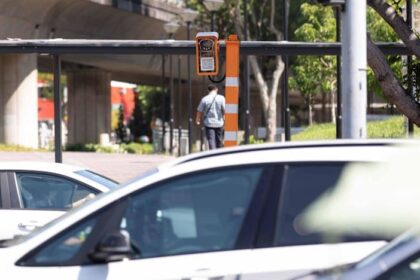Mountain Safety in Taiwan: New Signs and Mobile Coverage Aim to Reduce Hiking Accidents
As hiking and outdoor recreation surge in popularity across Taiwan, authorities have responded to a sharp rise in mountain accidents by installing thousands of new safety signs and expanding mobile network coverage in remote areas. The Forestry and Nature Conservation Agency (FNCA) announced these upgrades as part of a comprehensive effort to make Taiwan’s forests and mountains safer for both locals and tourists.
Why Are More Signs and Better Coverage Needed?
Since late 2019, Taiwan has eased restrictions on access to over 80 forestry roads, many of which were previously reserved for logging or local residents. This move opened up vast mountainous regions to the public, making hiking and climbing more accessible than ever. However, the increased foot traffic has led to a significant rise in accidents. According to the National Fire Agency, the number of mountain rescue incidents more than doubled from 207 in 2019 to 454 in 2020, and reached 513 in 2023. The most common emergencies involve hikers getting lost or injured, often in areas with limited signage or poor mobile reception.
What Do the New Signs Look Like?
The FNCA has installed 3,420 directional signs along popular trails and forestry roads. These signs are yellow and diamond-shaped, designed for high visibility even in dense forest. Each sign provides:
- Trail or path name
- Key landmarks and locations
- Distance markers in kilometers
- Coordinates in both the World Geodetic System 1984 (WGS84) and Taiwan’s TWD97 system
Placed every 100 meters, the signs help hikers track their progress and pinpoint their location in case of emergency. The information is presented in Chinese, but the use of international coordinate systems makes it easier for rescue teams to locate those in need, regardless of language barriers.
Mobile Network Coverage in the Mountains
In addition to directional signs, 1,381 signs now mark areas with reliable mobile network coverage. These are also yellow and are strategically placed where hikers can make emergency calls or access online maps. Taiwan’s three major telecom companies collaborated with the FNCA to identify and verify these coverage points, even in some of the most remote regions. The coverage signs are found in 19 forestry recreation areas and along major trails, including popular destinations like Taroko National Park and Yushan, Taiwan’s highest peak.
By clearly indicating where mobile reception is available, the new system allows hikers to plan their routes more safely and ensures they know where to seek help if needed. This is especially important in Taiwan, where mountainous terrain and dense forests can quickly disrupt communication signals.
How Technology Supports Hiker Safety
To further enhance safety, the FNCA has integrated all sign and coverage data into the government’s open data platform. Hikers are encouraged to download maps from official sources or use apps like Rudy Map, which is built on the free and open MOI map database. The OSM-Taiwan TOPO map, which mirrors the information on the physical signs, can be used offline—an essential feature for areas with spotty reception.
These digital resources allow hikers to:
- Access up-to-date trail and coverage information
- Navigate safely even without a live internet connection
- Share their location with rescue teams using standardized coordinates
Expert Perspectives on the Safety Upgrades
Officials and outdoor safety advocates have welcomed the new measures. The FNCA emphasized that the upgrades are a direct response to the growing number of accidents and the need for clearer, more accessible information on the trails. A spokesperson for the agency explained:
“We hope that clearer signage and improved communication capabilities will reduce incidents related to disorientation or physical trauma. Our collaboration with telecom providers and the integration of data into mobile apps are key steps in making mountain recreation safer for everyone.”
Annual maintenance is planned to ensure the signs remain accurate and visible, reflecting the government’s commitment to long-term safety improvements.
What Hikers Should Know Before Heading Out
While the new signs and expanded coverage are significant improvements, authorities still urge hikers to prepare thoroughly before venturing into the mountains. Recommendations include:
- Downloading offline maps and checking coverage areas in advance
- Informing friends or family of your planned route
- Carrying sufficient supplies and emergency equipment
- Staying on marked trails and paying attention to signage
By combining personal preparation with the new safety infrastructure, hikers can enjoy Taiwan’s natural beauty with greater confidence and security.
In Summary
- Taiwan has installed over 3,400 new trail signs and 1,380 mobile coverage signs in forests and mountains to address a rise in hiking accidents.
- Signs provide clear directions, distance markers, and GPS coordinates, aiding both navigation and emergency response.
- Mobile coverage points are now clearly marked, and data is integrated into government platforms and hiking apps.
- Authorities urge hikers to use official maps, plan ahead, and follow safety guidelines for a safer outdoor experience.












